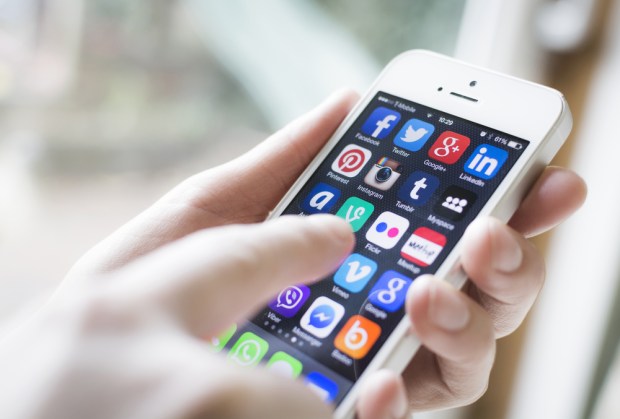WeChat App Growth Comes Amid Other App Market Changes

App store rising — that’s the story from China this week, where Tencent’s WeChat keeps expanding its digital ecosystem of mini programs, which are basically smaller versions of apps located within WeChat. Consumers reportedly have downloaded one million mini programs since their launch in early 2017 — that’s just less than half the size of the Apple App Store.
WeChat mini programs have attracted more than 114 million users since the launch of that offering.
The news underscores not only the importance of China to the larger world of app technology and commerce, but also provides more evidence of the power of app stores and app availability in general.
The Numbers
According to one recent estimate, consumers globally in the third quarter of 2018 downloaded 29 million apps from Apple and Google app stores, up 10 percent year over year. Spending on apps worldwide in Q3 hit about $20 billion — the highest amount yet, up 20 percent year over year. (Another estimate put app spending via Apple and Google at $18.2 billion, up 22.7 percent year over year.)
As reported by PYMNTS, in the third quarter of 2018, Apple’s App Store came out on top in a big way, earning nearly 93 percent more app revenue than Google Play. About 66 percent of app download revenue came from Apple’s App Store, with the store making $12 billion in the quarter on Apple apps, a 23.3 percent increase from the $9.7 billion it made during the same period last year. For its part, Google Play earned $6.2 billion in the quarter on Google apps, a 21.5 percent boost from the year-ago quarter’s $5.1 billion.
Beyond that, app installs grew 10.9 percent across both stores combined last quarter to reach 27.1 billion. The popularity of lower-cost Android devices in developing nations rewarded Google Play with an advantage in app install growth last quarter at 14.3 percent, climbing from 17.1 to 19.5 billion year over year. On iOS, new app installs reached 7.6 billion for the quarter, a 3.1 percent increase year over year.
As one can expect, mobile games continue to help drive app revenue and make app stores a popular destination for consumer spending. Mobile games spending increased 14.9 percent year over year during Q3 to $13.8 billion, with that spend accounting for 76 percent of all app revenue worldwide across both platforms. According to R-Style Lab, mobile games remain the top app category as measured by the percentage of available apps, followed by apps focused on business, education, lifestyle, entertainment, utilities, travel, health and fitness, books and food and drink.
But that doesn’t mean other types of apps aren’t finding increasing use among consumers — one of the changes going on that relate to the future earning and marketing power of apps and app stores. Retail and mobile commerce apps last year experienced a 54 percent increase in overall use, according to R-Style Lab, with music and entertainment increasing 43 percent, business and finance rising 33 percent and utilities (through which consumers often do bill pay) going up 20 percent. Mobile game apps, meanwhile, experienced a 16 percent decrease in use in 2017, with lifestyle apps going down 40 percent.
Growth in Asia
As the recent WeChat mini program figures show, apps are gaining power in Asia. Further evidence comes from research that shows at least half of global app spend for iOS came from the Asia-Pacific region (with most of that spending directed to mobile gaming apps).
But those mobile games are not the only game going when it comes to development of apps, especially in China. The WeChat mini programs, which essentially reside in the larger WeChat app, enable people to perform online activities — for instance, finding a ride after a night out at the bars — without leaving the larger WeChat ecosystem.
That ecosystem supports other forms of commerce as well. Recently, Feelunique, an online retailer of cosmetics and related products, joined the WeChat mini program world. A consumer navigates WeChat’s Discover column to the “mini programs” option, and then searches for Feelunique in the search bar before clicking to enter the store. “Browsing the mini program [is] just like browsing Feeluniques’s Chinese web store,” A Feelunique spokesman explained. “You select the products you like, add them to the chart and pay with WeChat Pay … or debit card. Then the transaction is completed.”
Russia Rising
It’s not just Asia-Pacific or the United States that are fueling the rise of apps, of course. Russia’s app market is hot, according to analysis from Forbes, and promises to account for more app store spending in the coming years.
With some 84 million mobile users, the country now stands as the fifth largest app market in the world, after China, India, the U.S. and Brazil. “Russia’s emerging app market is dominated primarily by Android operating systems,” the report read. “Google Play provides over three times as many downloads as the iOS App Store in Russia.” At the same time, though, “the local Russian app store Yandex.Store is the country’s largest alternative to the Google Play and Apple App Stores, and it comes pre-installed on most Russian smartphones.”
The growth of Russia and of WeChat’s mini programs are two of the main threads in the near future of app use and app stores, though the numbers point to a future where more apps will be about more commerce and payment activities, and not just mobile games.
